Bread has long been tied to the meaning of life––spiritually, physically, and symbolically. It’s sustained cultures and been the subject of countless conflicts. It’s a natural partner for butter––be it begotten of a cow, or an ever-expanding variety of nuts. It is intimately acquainted with olive oil in some cultures, chocolate in others, and jams almost universally. It’s a vehicle for all manner of meats and cheeses, a metaphor for prosperity (and cold, hard cash-money), a snow-storm supermarket commodity, and of course, a foundation without which we would not have the all-important, generationally- and culturally-transcendent stack of bread-and-other-stuff that we’ve come to know as the sandwich.
And sitting in the back of our Editor in Chief’s car, holding an undivided loaf of levain the size of a regulation sized football, it is the only thing on my mind.
We’ve been on the road all day, having left Los Angeles early in the morning, and by this point––nearly six hours later in Los Gatos, California––we’ve got little more than lukewarm cupholdered coffee left to keep us going. That is until our stop at Manresa Bread, where we were given the gift of fresh bread.

Under more dignified circumstances, we might examine the crumb, dissect the composition and debate the salt level and style. But right now, there’s simply no time for that kind of thing. In fact, there’s little sound at all aside from the crackle and crunch as shards of crusty shrapnel shower the car’s seats. Talk about breaking bread.
“Here, try this one,” I say, perhaps a little boorishly thanks to a mouthful of perfectly chewy, creamy levain. I remember that we were given more than one option, and I extract a baguette from its slender paper package to pass forward––wincing a little as it singes my fingertips.
At some point I start laughing as our captain steers the Toyota Camry––wheel in one hand, a two-foot, half-eaten baguette in the other. Maybe it’s the Santa Cruz sun. Or maybe I’m simply delirious with starch-fueled felicity.
At its most basic, bread is simply flour, water, yeast and salt. But maybe most apparent in a moment like this––while giddily addressing a gut-pounding hunger––is the beauty in bread’s elemental nature. That we all have an intrinsic, instinctual need for the stuff is why our ancestors created it, why the good people at Wonder wanted to trademark it, and why we decided to slice it so we could easily ingest ever more of it.
But today, we have Avery Ruzicka to thank for it.

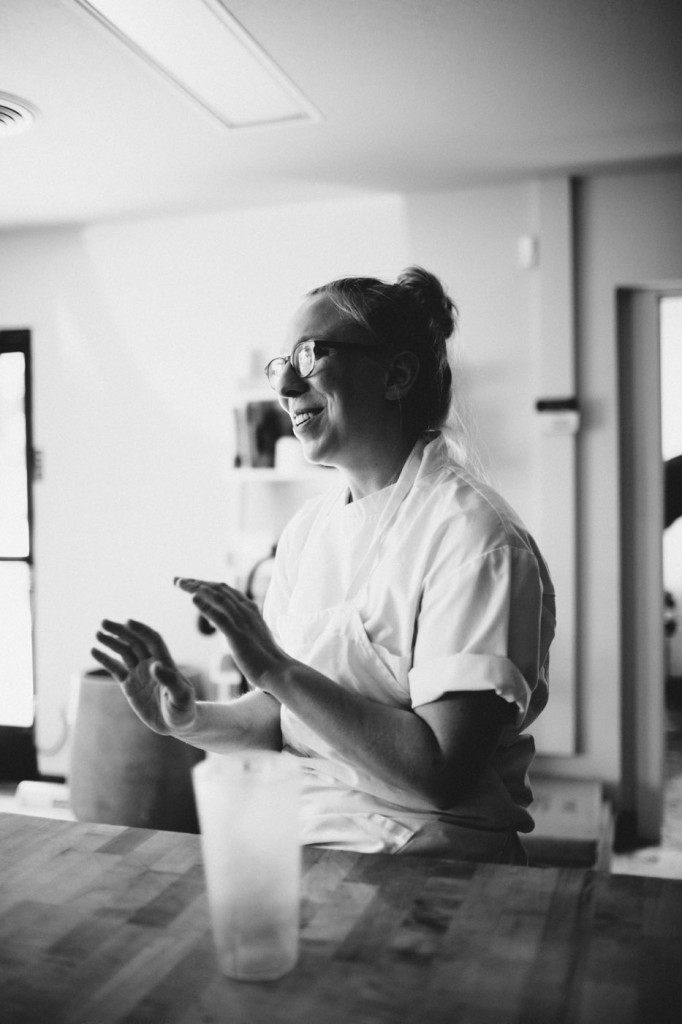
—
A few short hours earlier when we meet Ruzicka, she’s sporting a pretty mean burn on her upper arm. The horizon of a welt has the thin, rounded edge consistent with the lip of a smoldering sheet pan. This commonly accepted merit badge of the baking profession is the inevitability of operating temperatures in the 450 degree range. Lacking in Law & Order-level forensic know-how, it’s hard to guess the age of the wound, but if it bothers her she certainly doesn’t show it. Despite the look of general badassery it gives her, Ruzicka is all smiles nearly the entire time we’re with her. The bespectacled and blonde chef speaks rapidly, with the efficacious enthusiasm of someone in constant search of kindred spirits––i.e. fellow bread geeks. Today, those geeks are us.
We’re getting a tour of the new Manresa Bread facility, one vertex point of the Los Gatos culinary triangle that is this new production location, its retail storefront, and Manresa, the restaurant––a Michelin-starred fine-dining venue that spawned the baking operations.
The offshoot, Manresa Bread, opened officially in January of 2015 and coincided with the re-opening of the restaurant after a devastating fire ingested the back half of the building in June of 2014. At the time, planning for the full-scale business originally designated as “The Manresa Bread Project” had just begun, but all along the way, the directional needle of the Manresa Bread compass has been aimed steadily at Ruzicka’s north; each step cautiously mapped along the path she blazed on her arrival.
Ruzicka began working at Manresa in 2011, relocating from her then home of New York City (originally, the chef is from North Carolina) in hopes of eventually landing a larger role within the organization. She recalls, “I moved out here and made a six-month commitment to the front of the house as a food runner, with the understanding that I wanted to work in the kitchen.”
By night, mild-mannered Ruzicka was dutifully expediting fine dining meals. But by day, she was making a mental note of an auspicious absence that might help her snag a more aspirationally appropriate position. “I had my mornings free and they didn’t have anyone specifically doing bread. They let me slowly take over, and when I went to the kitchen, within about six months they created the role of baker for me.”
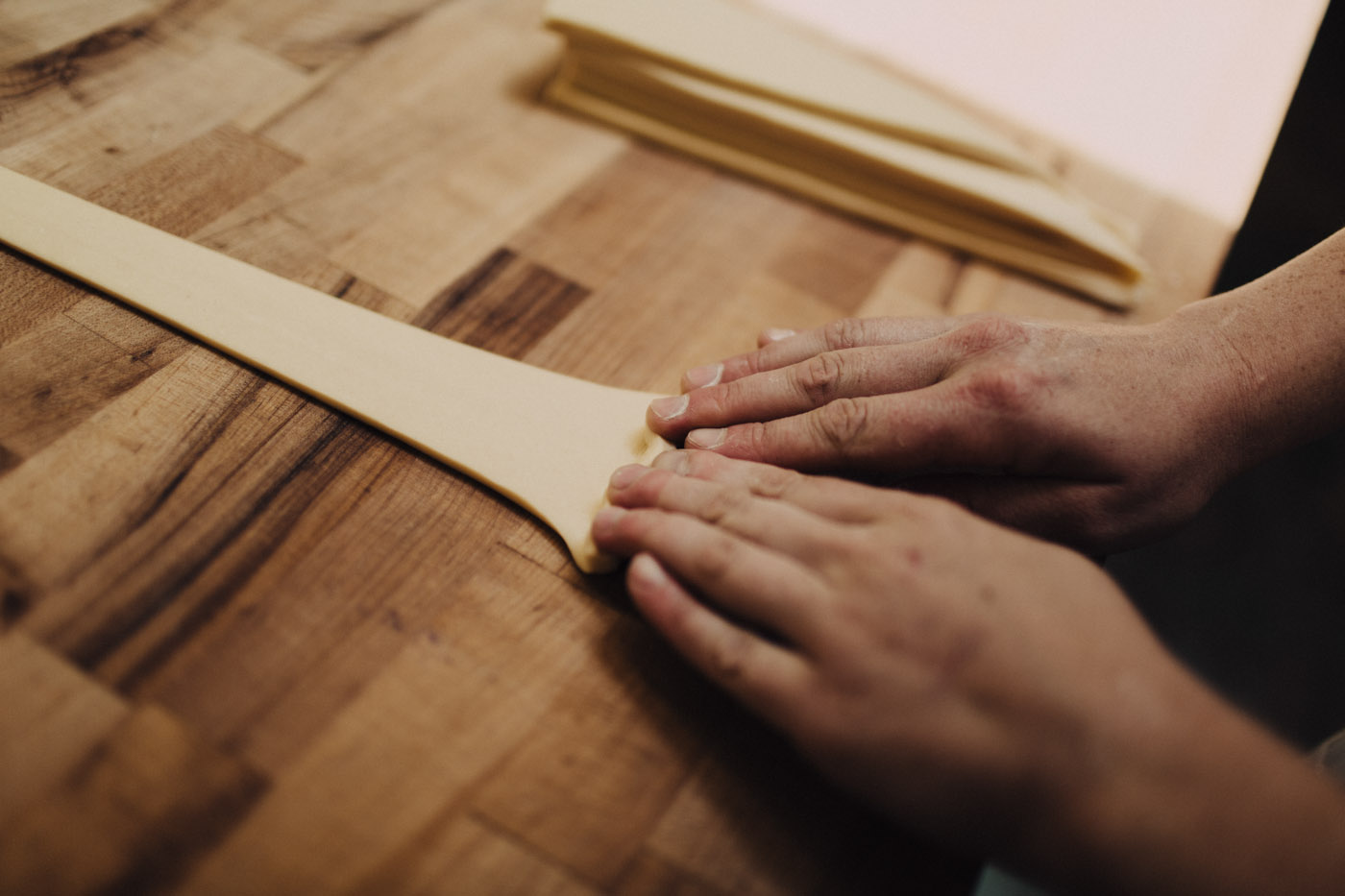
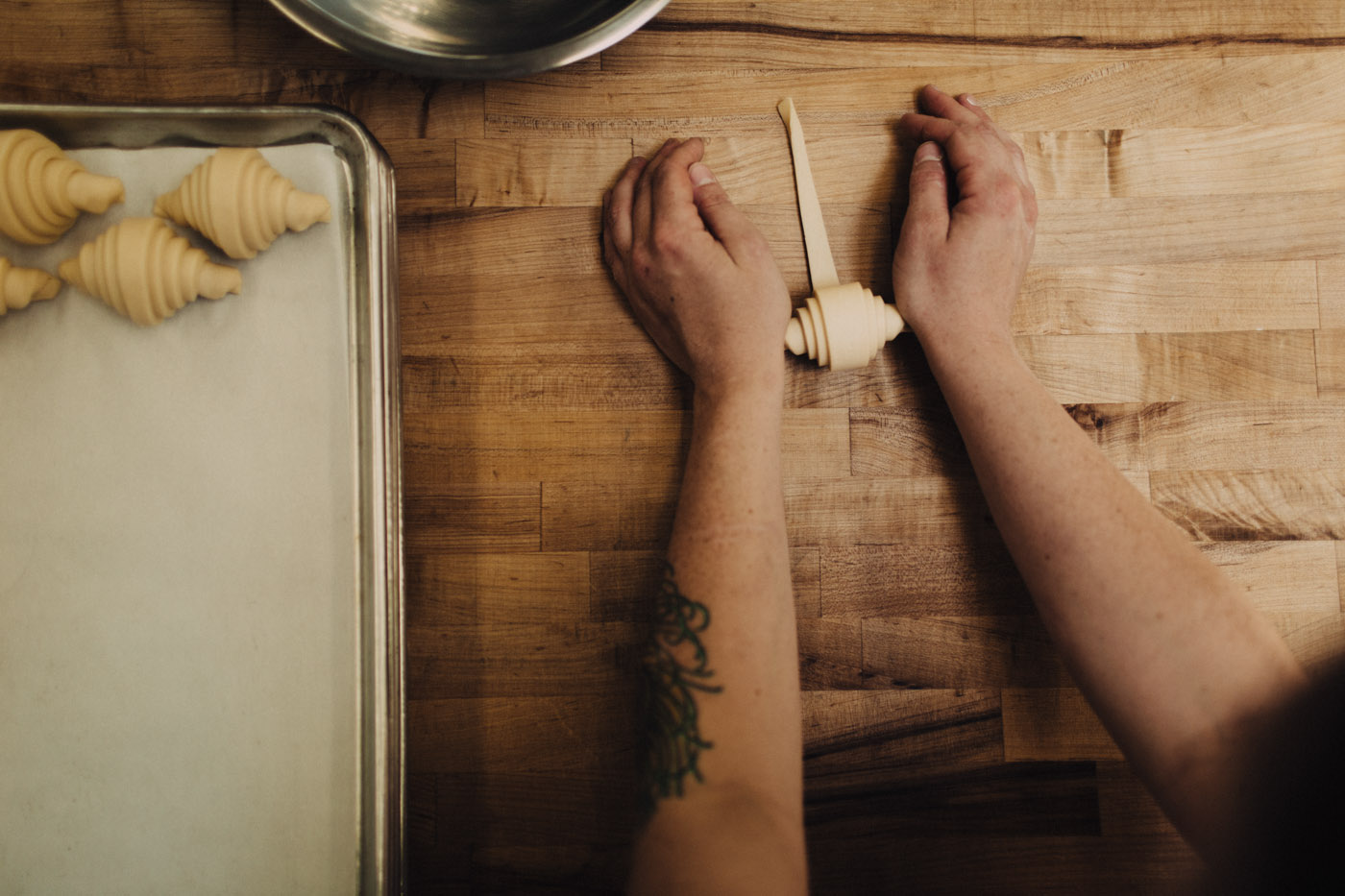
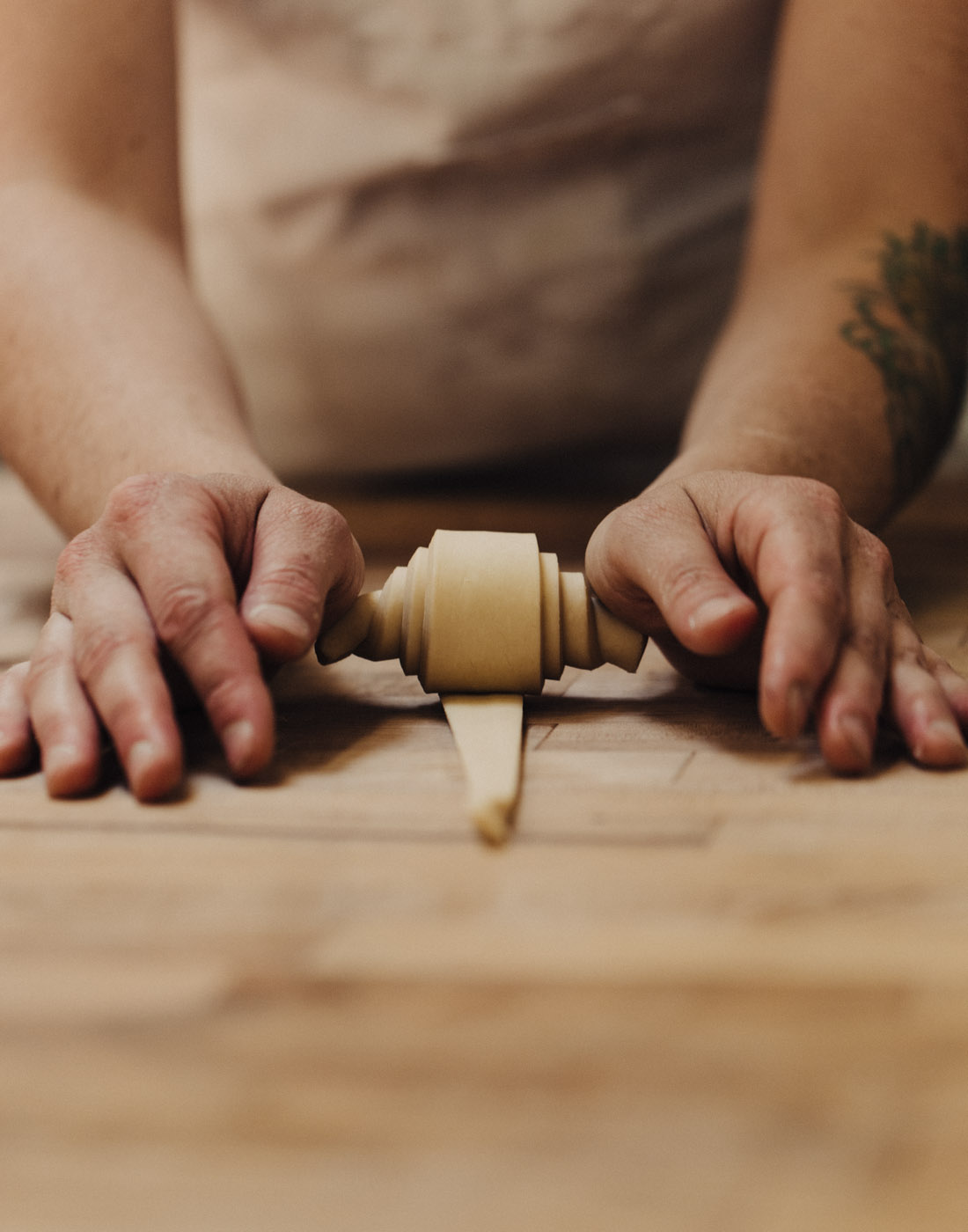
Then, in 2013, two events functioned as the starter for what would become Manresa Bread. The first was the introduction of new blood at the restaurant. Arizona-born Andrew Burnham, who had grown tired of his New York City hedge fund career and converted to cooking by way of the French Culinary Institute (where Ruzicka had also studied), joined the Manresa kitchen.
Around that time, a guest at Manresa in charge of organizing local markets approached the team, looking to add the bread he’d enjoyed at the restaurant to his list of offerings at one location. Before long Ruzicka was filling yet more of her time, spending weekend mornings hand-selling loaves to the local community, and inadvertently conducting preliminary farmers’ market analysis on the feasibility of a standalone baking program.
Working directly with patrons and bringing her bread to a new outlet was immediately enjoyable to the sociable chef, but her production space was less suited to the project. “That restaurant was not meant to be a bakery, it was meant to be a Michelin-starred restaurant. Saturdays were kind of a clusterfuck––lambs hanging in the walk in and two to three speed racks in there for bread,” Ruzicka remembers of the not-so-distant past. But it didn’t slow her from pushing the program to capacity. “By the time I left, we were running multiple markets out of [the Manresa kitchen].”
Looking around now, by comparison I imagine that this new location––a bunker-like, white-walled, one level building (which was previously used as a manufacturing facility for “really fancy 3D flat screens,” according to Burnham) must feel like a private playground stacked with sparkling new toys.
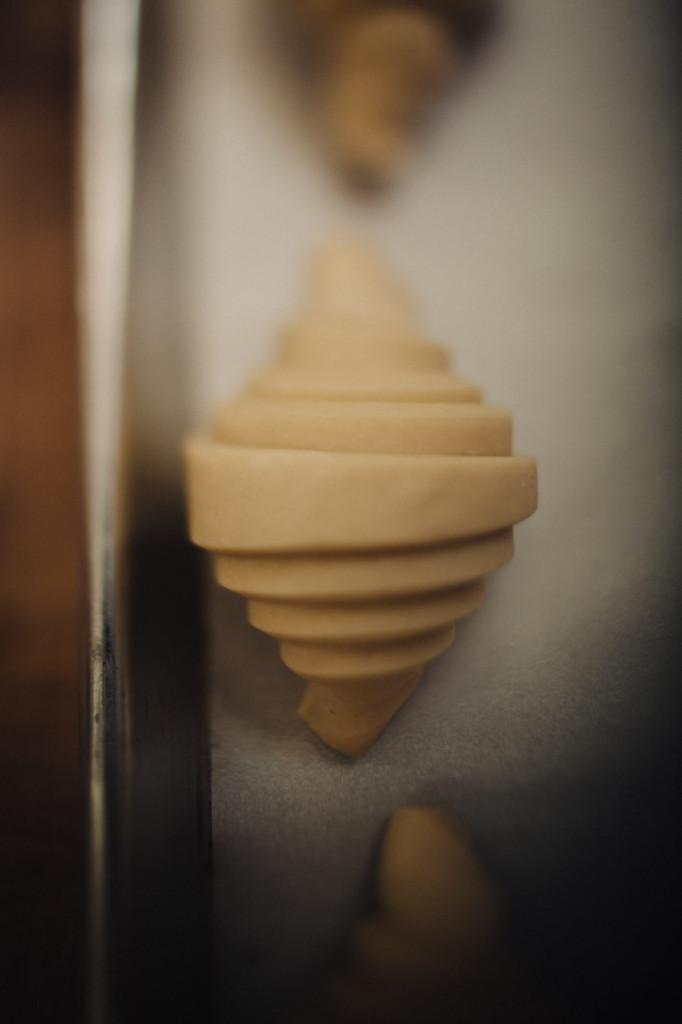
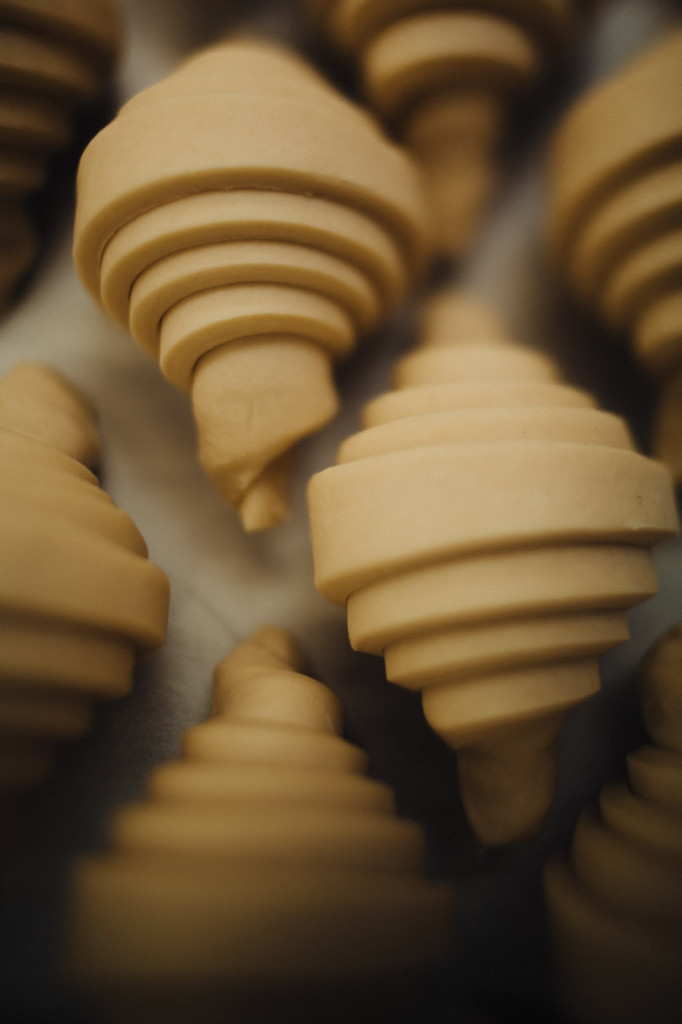
“For me, it was pretty magical, getting to see what happened with our breads [since moving]. Their full potential wasn’t able to be expressed before,” Ruzicka says, preparing to dive into the nerdy bread science we’d all been waiting for. We lean in to listen, blissfully absorbing the olfactory evidence in the room as she makes each of her points.
“When I first started working at Manresa we only had a convection oven,” Ruzicka remembers. “We had to have a cast-iron pot in the bottom of the oven.” She explains oven spring to our rapt audience, a phenomenon not completely achievable in their former oven. “[Oven spring] is supposed to happen from the expansion of the gases within the dough; they build up from fermentation and are trapped by the gluten structure created in mixing. Then when we bake, we score the bread, and in the burst of heat when the bread goes from ambient temperature to 450 or 470 degrees, it should expand. In a regular oven, you don’t have any hearth heat underneath the oven or bread.” That type of heat, she says, is critical to the expansion that their new oven can achieve for each bread.
Ruzicka continues the rundown of equipment, a grateful grade schooler tallying gifts after a birthday party. “Previously, I was making [the levain] on Saturday morning and baking it on Saturday night, so the most fermentation it would have would be 18 hours. Being here and having our own retarders––suddenly we went from 18 to 36 hours. Getting to see the exact same bread going from 18 to 36 hour fermentation, or the exact same bread going from being baked in a non-deck oven or something that doesn’t have hearth heat was really thrilling.”
Pillowy sacks are piled throughout the space; Ruzicka gestures to them, explaining that the Manresa kitchen could only accommodate four bags of flour at a time.
“Being in our own space, we’re able to have someone custom mill something for us and ship us two or three thousand pounds of it,” she explains. “We do 100 percent whole wheat bread, and prior to being here, it was hydrated at about 80 to 85 percent. Now we hydrate to 100 or more; because we’re using that freshly milled, stone-ground flour, the absorption is totally different. The space, the access to ingredients has changed the way we can do things.”
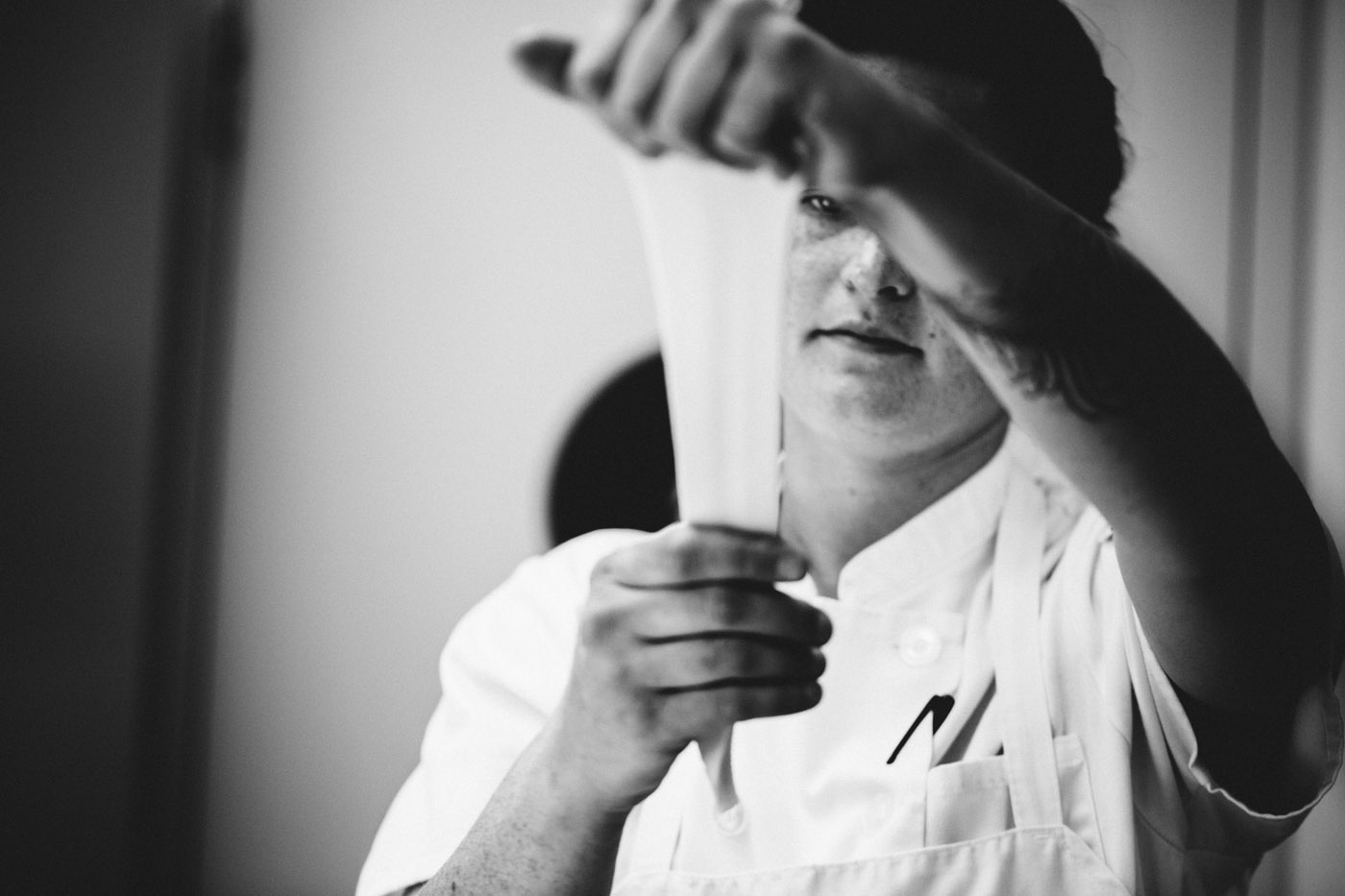
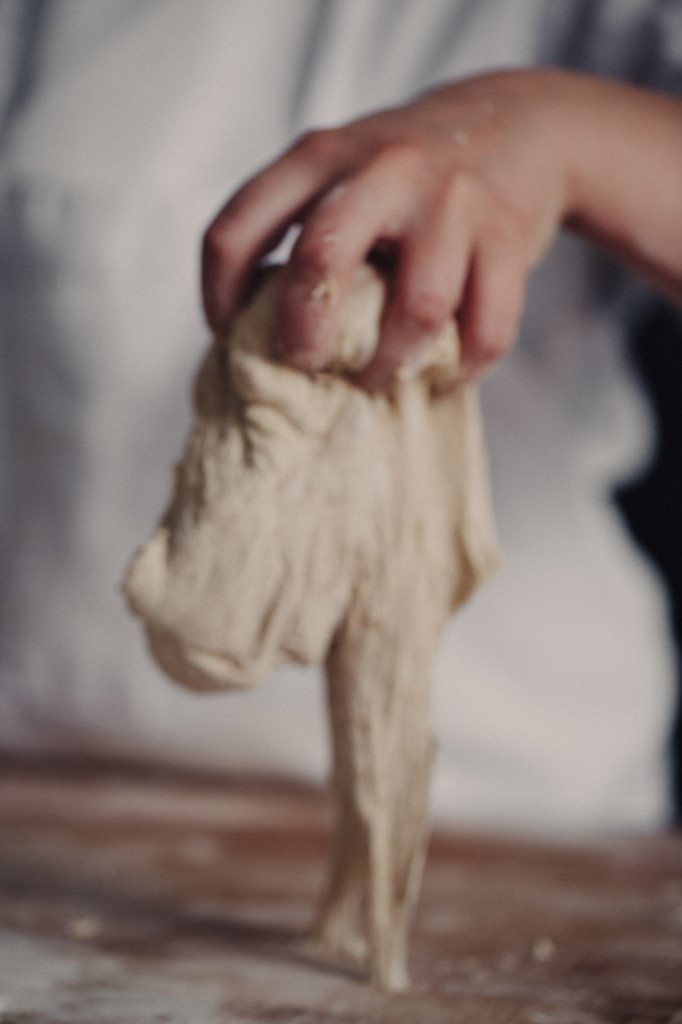
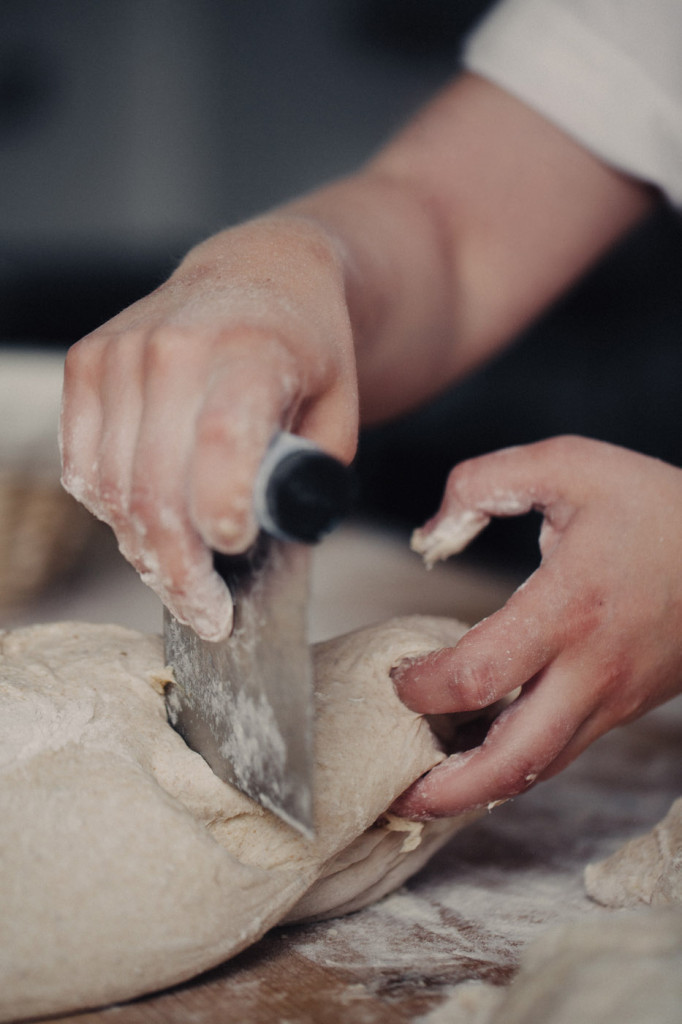

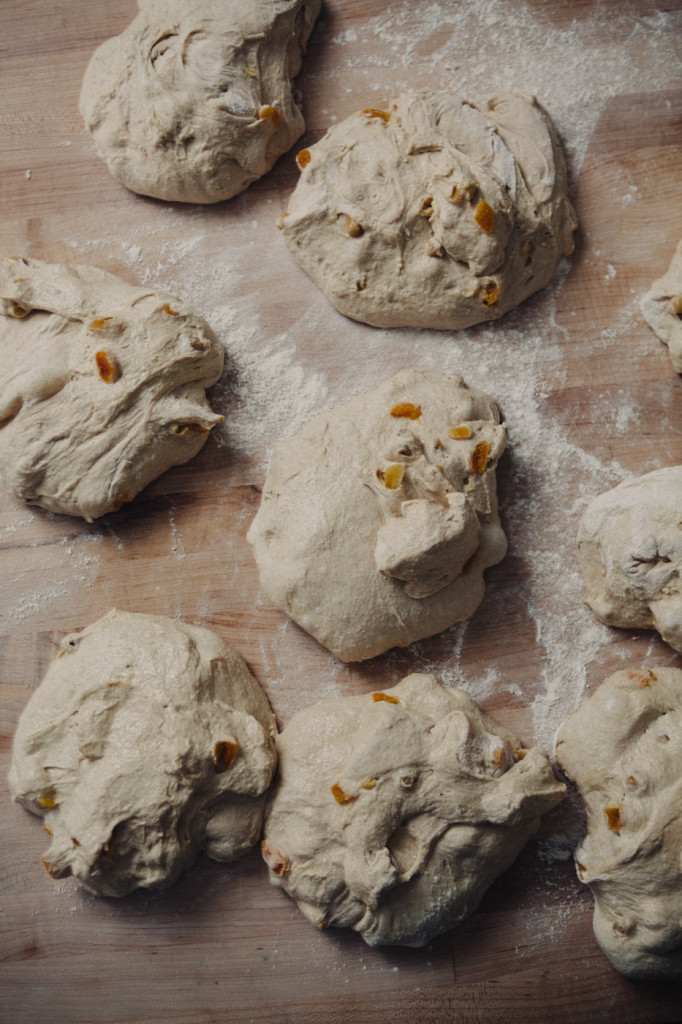
Precision, analysis and refinement––and an obsessive focus on improvement––are characteristic of Ruzicka and Burnham’s leadership, and fuel Manresa Bread’s philosophical flare.
“Every day you bake you do the same thing again and again, but every day you’re trying to tweak that because you’re looking for things––details that someone who picks up a loaf of bread might think, ‘This looks nice,’ but not necessarily know how it works,” Ruzicka explains.
“We want to create a really amazing guest experience and products that we’re proud of,” the chef continues. “So we’re continually reassessing. If you are reaching that moment when you feel you know 100 percent how to achieve a consistent product, then that might be the time to ask yourself something about that quality. Am I happy with the crust? Am I happy with the crumb structure? Do I think it could be a little looser or a little tighter?”
Ruzicka and Burnham want their team to ask those questions, to be curious and analytical. Ruzicka says these are nods to Manresa’s ethos as a whole––consonant with the tone set by chef/proprietor David Kinch––and ones that drew her to the restaurant in the first place. “I loved food, but I also loved that there was always endless curiosity. It was true of the kind of kitchen [David] was trying to create––one where people are asking questions.”
And while its principles may be closely tied to Manresa’s own, its role in the community––to provide the utility products, comforting daily staples whose presence is less celebrated and more assumed––is a significant departure.
“Manresa isn’t a place you eat at every day. It’s a luxury, it’s a special occasion,” she says. And it is conversely humble role that a bakery plays––to provide hot coffee and a fresh morning pastry for patrons at the start of the day, to send the unifying levain loaf home to a family’s dinner table at the end.
A bakery remains today––in a time of tasting menus and two-hour dinners that double as theater––the bedrock of a community. It’s a place in which workers become extended relatives to regulars, they come to know kids’ favorite pastries and families’ common routines. While a Michelin-starred restaurant is a singular experience, a bakery is a long-term relationship; it memorizes pee-wee football schedules and remembers the ballet recitals, while the restaurant hosts the anniversary meals and celebrates job promotions.
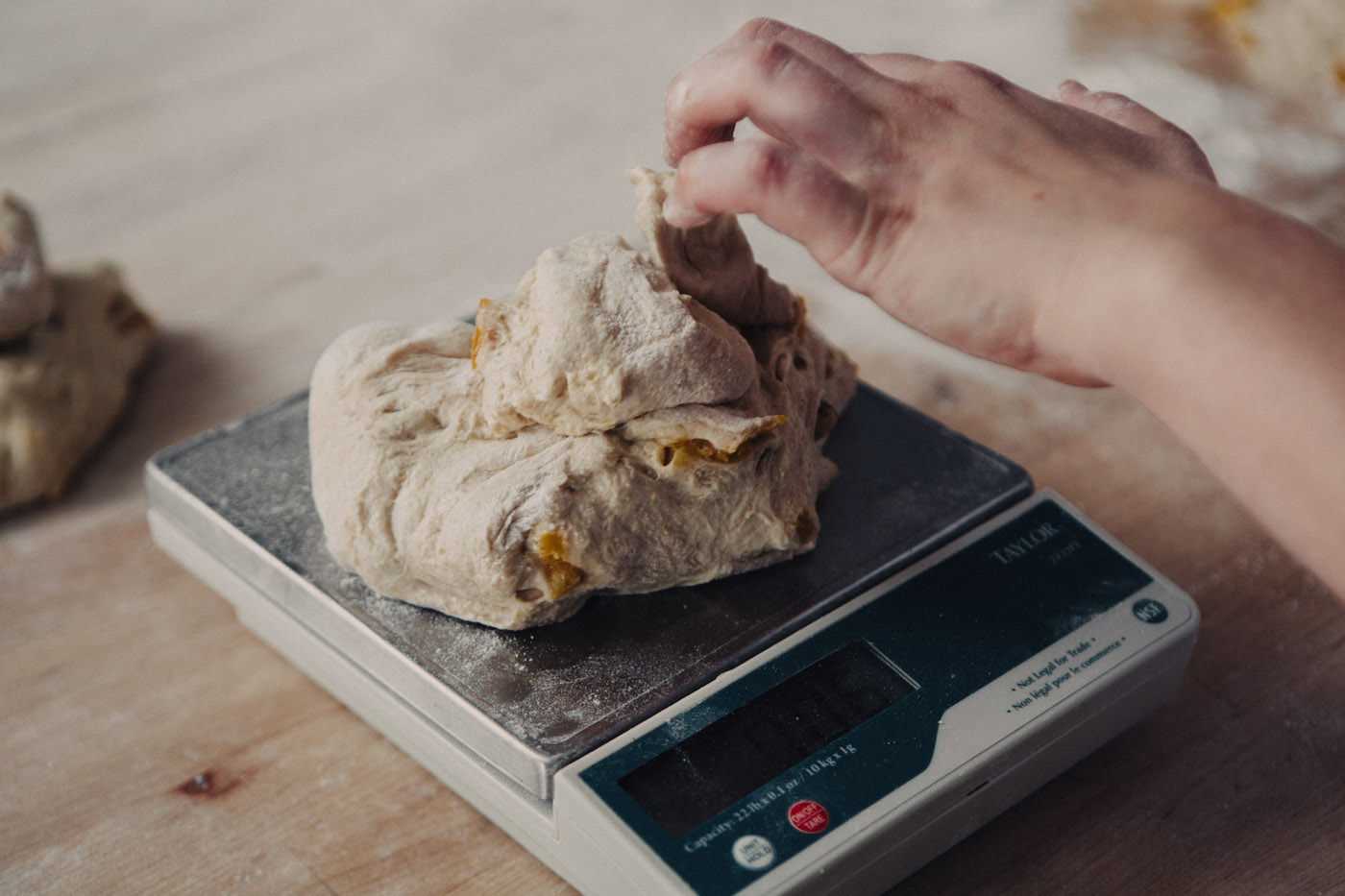
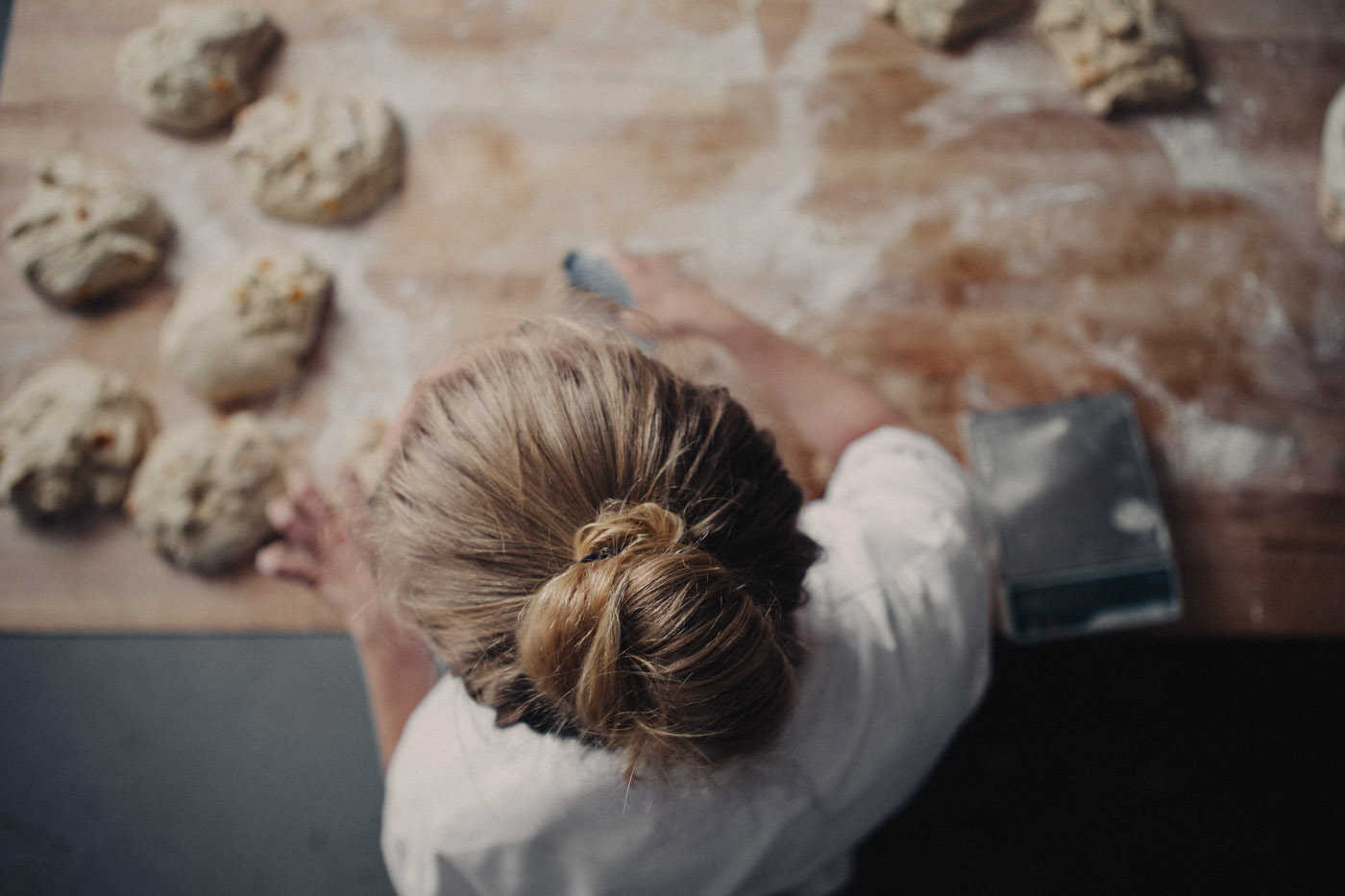
And sure, they technically are in the same business––of feeding people––but under different leadership, birthing a community bakery from a fine-dining restaurant would be a little like swapping birthday cakes for a bowls of breakfast cereal.
Having that upscale mentality in a familiar setting, Burnham says, is what makes Manresa Bread most unique. “I think it definitely differentiates what we do from other bakeries,” he says. “The beauty of it is that we look at this like a fine dining restaurant. [Bread] is not a luxury good, it’s a five-dollar item. But [here] it’s something that gets the same attention and militant focus on process and ingredients that you’d find with something far more valuable.”
Burnham explains that constant experimentation is important not only for refining their product, but for keeping themselves engaged. “We think, ‘What are the ten things we’re really excited about right now?’ We really love old school kouign amann. We wanted to really get freshly milled something into something else. It’s a more organic, authentic concept––and then we see if there’s a way to do it that is economically scalable and feasible.”
The fired-up management team clearly inflames the Manresa Bread family, but their passion has also extended to more personal relations. Ruzicka’s father––back at home in North Carolina––has even stepped up his baking game to match his daughter’s skills.
“He’ll ask me about how I do something and then try it at home,” Ruzicka smiles. “He’s milling his own flour using a Vitamix, and he’s extending the fermentation on his dough now that he’s using fresh-milled flours,” she says. “It’s really fun!”
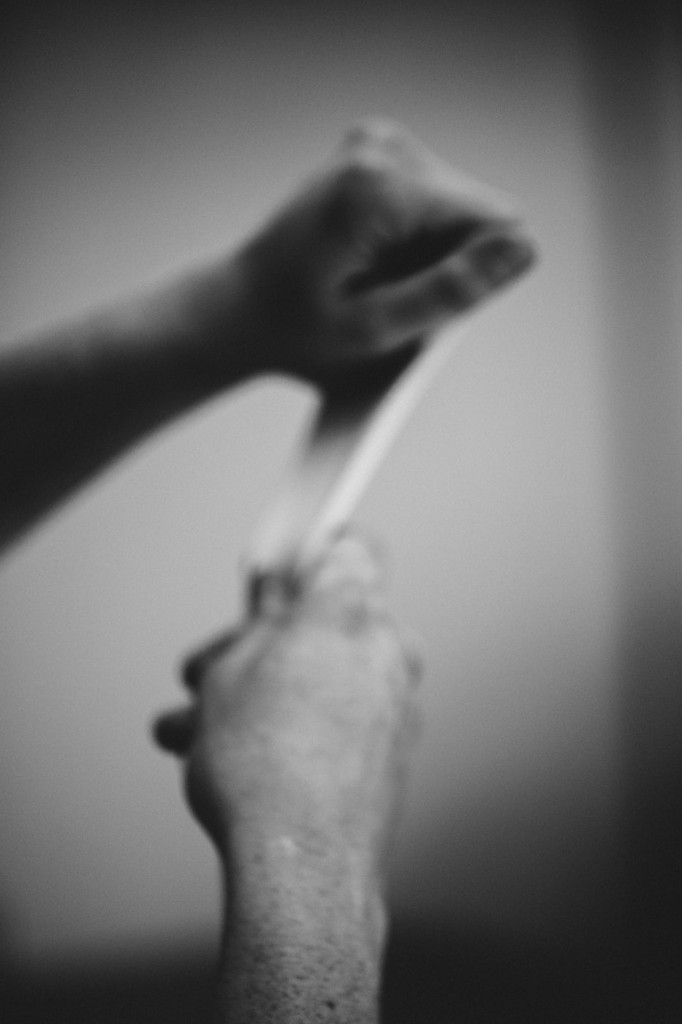
Just before we hit the road again, we follow Ruzicka to her beloved new oven so she can pull loaves of their levain––the very ones that in just a few minutes we’ll tear into like wild animals. There’s a clip of a moment when the doors drop and the mouth of the machine exhales irascibly, angry at the the chef for relieving it of its precious contents. But she doesn’t flinch.
In fact, Ruzicka never seems to shy from searing heat––be it the kind that can leave a physical mark, or in the form of the pressure that no doubt comes standard with shouldering a fine-dining institution’s newest venture. Perhaps in harnessing the element that has been most devastating to Manresa, Ruzicka is proving that it may also be among its strongest assets in her skilled, determined hands.
Bread may not necessarily be a luxury item, but trust me––find someone who is truly hungry, or maybe just coming off of a long road trip––and ask them if there is anything in the world they’d rather have.
—
Manresa Bread
276 N Santa Cruz Ave, Los Gatos, CA 95030





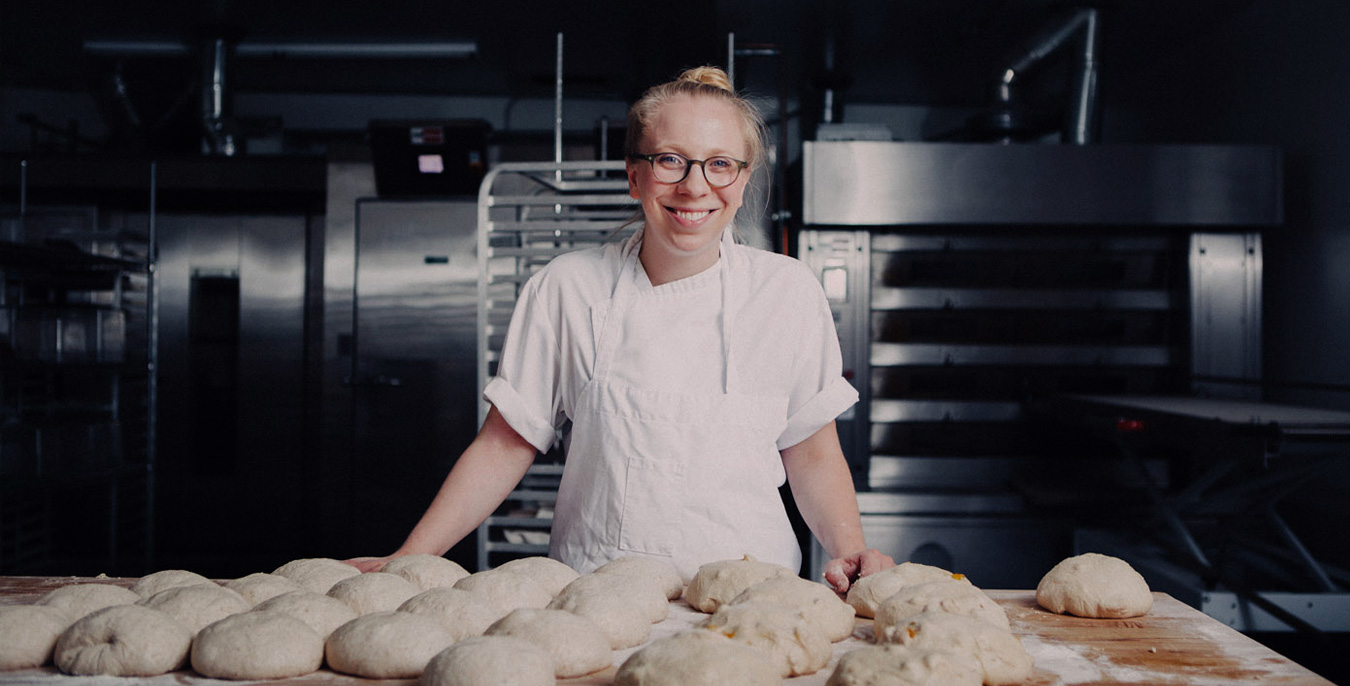

Our comments section is for members only.
Join today to gain exclusive access.